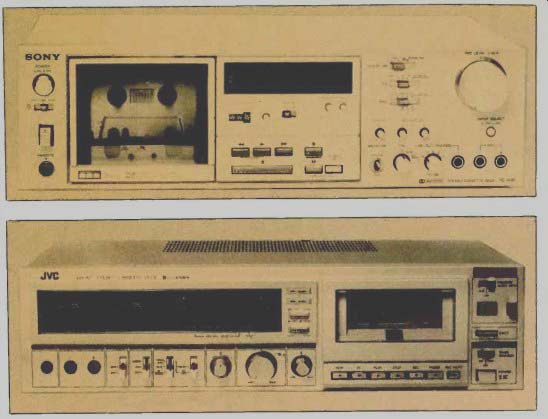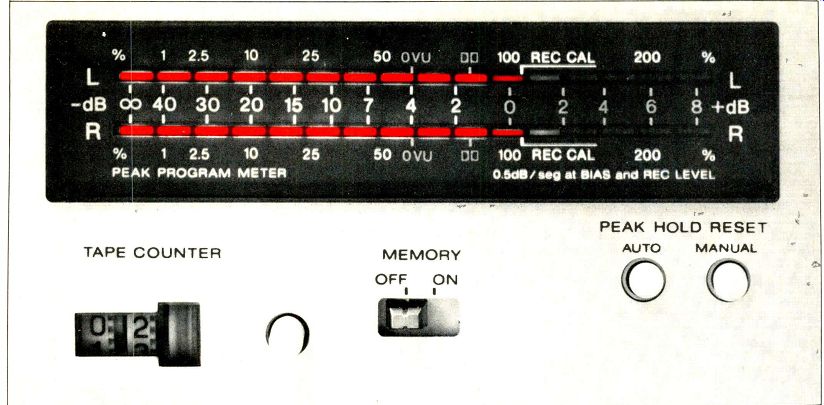
by Ronald G. Ajemian [Instructor, Institute of Audio Research, New York,
N.Y.]
Introduction Lord Kelvin, William Thomson, per haps said it best, in the last century:
"When you can measure what you are speaking about, and express it in numbers, you know something about it; but when you cannot measure it, when you cannot express it in numbers, your knowledge is of a meager and unsatisfactory kind; it may be the beginning of knowledge, but you have scarcely, in your thoughts, advanced to the stage of science."
More succinct is the engineer's axiom: "To measure is to improve." While it is not trivial to note that we must have some notion of what it is we are attempting to measure before we apply the calipers, since it's difficult to measure volume with a yard stick, we must also fit the scale to the subject--so that yardsticks are not applied to record grooves or to FM reception distances.
Thus, we come to the subject of this article, new techniques in metering circuitry, specifically Light-Emitting Diode (LED) and Vacuum Fluorescent (VF) types. I'll leave it to the author to explain how they work; I want to ex plain why these techniques are new and why they are important.
First of all, we should consider the older type of meter, the one with the swinging arm or needle. You can still find them in many, many pieces of electronic gear today, and they will probably be with us for at least another generation. When they are well made, they work well and, when proper for their application, should not be discounted in their excellence.

The way this meter works is fairly simple. It's similar to the grade school science teacher's experiment with the magnet and the paper of iron filings; remember how more filings stood up when the magnet was right under the paper than when it was further away.
Swinging-arm meters work much the same way; the magnet moving closer to the paper is equivalent to more current being fed into the meter's electro magnetic coil. The trick is to make the meter proper for its application, and here we should distinguish between two basic types of meters--averaging and peak responding.
Perhaps the most common kind of averaging meter is the VU (volume unit) type, which is the basic meter found in recording, both on professional and amateur levels, and in broadcast, the two places where most current types of equipment got their start. While I personally suspect that the originators of the VU meter would have liked to have made their brain child respond to peaks if they could have, this was probably mechanically impossible at the time. More important, however, was the problem a peak-reading meter would have caused an engineer in a recording or broadcast center--how in the world does one set a level so as to stay up off the noise floor and stay down out of system distortion when the meter needle is jumping around? The answer is what is embodied in the VU meter, sluggish ballistics, but ones that can be duplicated by any competent manufacturer and that work off voltages and into impedances common in the equipment and commonly agreed upon. (The 0 level on a VU meter corresponds to one milliwatt of power in a 600-ohm circuit, i.e. 0.775 volt).
The announced intent of the VU meter was to at least roughly match the ear's response to varying loudness, and it does so quite reasonably well, because the ear-brain combination tends to average out strong and weak sound pressure levels. The position of the VU meter's needle, therefore, seems to mimic one's subjective reaction to different loudness levels.
There are, however, other factors involved. With meter ballistics slowed down, engineers (as well as listeners at home) began to hear bursts of noise and distortion, even though the VU meter was staying relatively still. Usually, this was because the medium was being pushed up into distortion for short periods, and standard VU meter ballistics could not and were not in tended to show these peaks.
Thus, engineers were confronted with a need for a meter or system that would show these peak values, which can easily be as much as 12 to 15 dB higher in level than the value shown on a VU meter. While compression and limiting circuits can do some of the work in adjusting signal levels, they too need an initial setup.
How slow is a VU meter? Well, it's pretty quick actually, taking about a third of a second to reach 99 percent of a standardized input. However, the ear is substantially quicker since it takes only about 15 to 30 milliseconds, one-tenth the time, before we begin to recognize distinct notes or echoes. So it's no wonder that we can hear distortion on peaks that are missed by aver aging meters.
Admittedly, I am shortchanging the meter makers, since they can make faster meters than the averaging type, of which the VU meter is an example. But the same basic problem of slowness remains, and there are other factors which deserve at least a passing mention. Obviously, the meter should respond to a broad range of frequencies, say 20 Hz to 20 kHz, but should the meter's relative response to different frequencies be tailored to an A-weighting curve following the ear's natural response? Or do we want the meter's response to show us some thing about system distortion at different frequencies, since that's what we're trying to get rid of (along with trying for high signal levels)? And there are polarity problems too. Some meters do not respond as well to a signal that starts off in the negative direction as they do to a signal that starts off positive.
One solution is in the electronic displays discussed in the other part of this article. Since they are electronic, they can turn on and off virtually with the speed of the signal they are tracking. But, and even better, these displays can be tailored to many, many uses, with infinite variety of refinement, through the use of timing networks and filters. They can have fast attack times to accurately follow peaks and, just as easily, have slow decay times so the eye has no trouble following the bouncing meter. And they can make excellent spectrum analyzers--some thing not possible with meters.
But let's see how these new displays work.... The Editor
Currently we are seeing more and more Light Emitting Diode (LED) and Vacuum Fluorescent (VF) based audio power meters being employed in receivers, power amplifiers, tape decks, etc. These electronic displays usually give indications of clipping, which can cause distortion and dam age to an amplifier or speakers, and they are also excellent devices for balancing a home stereo system.
Many manufacturers produce the integrated circuits for LED and VF display indicators. Their bar/dot displays are arranged either horizontally or vertically, while some scales are in a semi circle format similar to those found in analog meters. A pointer moves along the analog (moving-coil) meter scales, but it is moving light that does the pointing in LEDs or VF meters.
Fig. 4--Vacuum fluorescent level display with drive circuitry.
Operation
National Semiconductor's LM3916, represented in Fig. 1, may be used to illustrate the operation of bar/dot VU-display drivers. This monolithic integrated circuit works on the comparator principle. The LM3916 contains an ac curate precision 10-step voltage divider network connected to the positive inputs of the comparators, which scales to provide an electronic version of the conventional moving-coil meter. The circuit will illuminate 10
[...]
==========
(adapted from Audio magazine, Dec. 1980)
Also see:
A Peak-Reading VU Meter With Compensation For Tape Saturation (Oct. 1972)
A Dynamic Noise Filter for Mastering (June 1972)
Noise Reduction Techniques (Oct. 1972)
Dolby B-Type Noise Reduction System (Sept. 1973)
Dolby B-Type Noise Reduction System--Part 2 (Oct. 1973)
Introducing Dolby S-Type Noise Reduction (Jun. 1990)
EQ & NR: Striking A Balance (Aug. 1988)
Deck to Deck Matching and NR: Straightening the Mirror (Aug. 1986)
= = = =